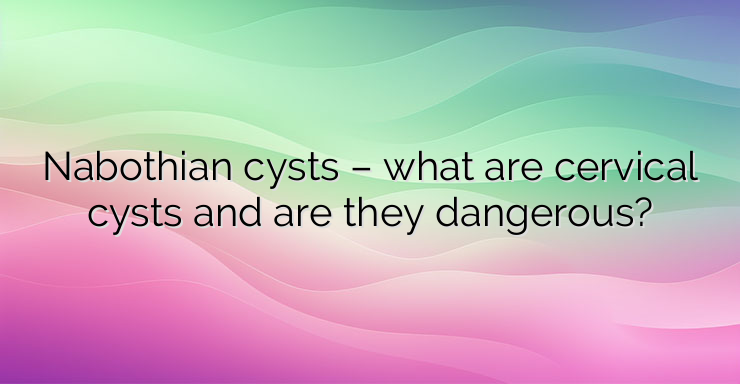Nabothian cysts are harmless growths that sometimes form when skin cells clog glands in the cervix. They are common and usually do not require specific treatment. Cysts are small bumps that form when skin cells trap mucus inside the glands located on the cervix. They can be single or multiple. In most cases, symptoms are absent, and the diagnosis is made during a routine gynecological examination. Nabothian cysts are more likely to appear between puberty and menopause. There are processes that affect the way the skin cells in the cervix grow, making them more likely to become blocked and form cysts. Such conditions can be: Birth. Skin cells grow faster after birth. The new cells can clog the glands in the cervix, causing small cysts to form. Injuries in the area of the cervix. After an injury, the skin cells in the cervix increase in size. The new cells “repair” the damage done to the tissue. These cells can block the glands in the cervix, depositing mucus there and forming a Nabothian cyst. After inflammation. Very often, precisely because of the reproduction of cells at the site of inflammation or trauma, single or multiple cysts are formed. The glands in the cervix regularly produce mucus. Sometimes, however, healthy skin cells cover these glands, creating a barrier that traps the mucus inside the gland. With no outlet, this mucus swells inside the gland, forming a cyst. Depending on how much mucus is trapped inside, these cysts range in size from a few millimeters to 4 centimeters in diameter. Seen closely, they may appear white or yellow in color. Rarely, cervical cysts may cause symptoms to suggest their existence. Slight pressure or feeling of fullness in the vagina; Pain before, during or after intercourse (dyspareunia). Symptoms more often occur when an existing cyst ruptures. When the cyst ruptures, it releases mucus and small amounts of blood, which women may notice as vaginal discharge. The discharge of this mucus is associated with an unpleasant odor. These symptoms usually do not last long. However, if they persist for a longer period of time, it is necessary to conduct a gynecological examination. Having a particularly large cyst or multiple cysts can make it difficult to get a sample during a Pap smear. Cysts can become so large that they make it difficult to access the cervix during a pelvic exam. This happens very rarely. Nabot cysts are painless bumps that usually do not interfere with daily life. References: https://my.clevelandclinic.org/health/diseases/22653-nabot


Leave a Reply